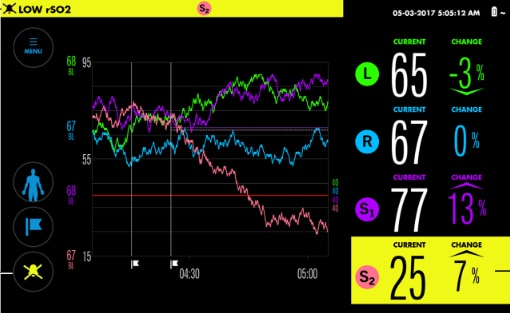Overview
A Reliable First Alert1 for Confidence in Your Response
The more you know about your patients, the better care you can provide. Cerebral oximetry can play an important role in that care as a valuable “first alert.” Because it monitors for haemodynamic changes and deteriorating patient conditions. And a wellprotected brain may act as an index organ of how well organs are perfused and oxygenated.1
INVOS™ technology meets those clinical demands — and more. In fact, no other cerebral oximetry technology is backed by a comparable volume of published, peer-reviewed clinical research.
Reliable and validated characteristics include2:
- Accurate value based on a good correlation with field saturation (75% venous to 25% arterial ratio)3
- Optimal sensor spacing of 3 and 4 centimeters2
- Wavelengths of 730 and 810 nanometers
- Clinically responsive algorithm2


